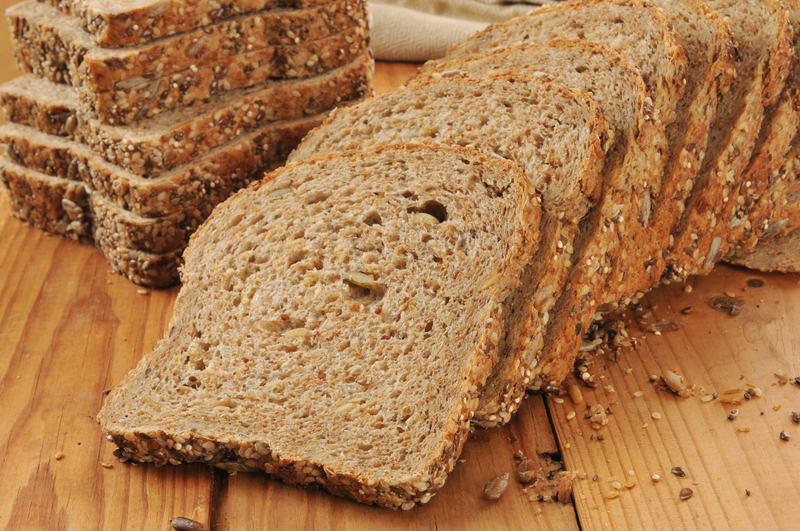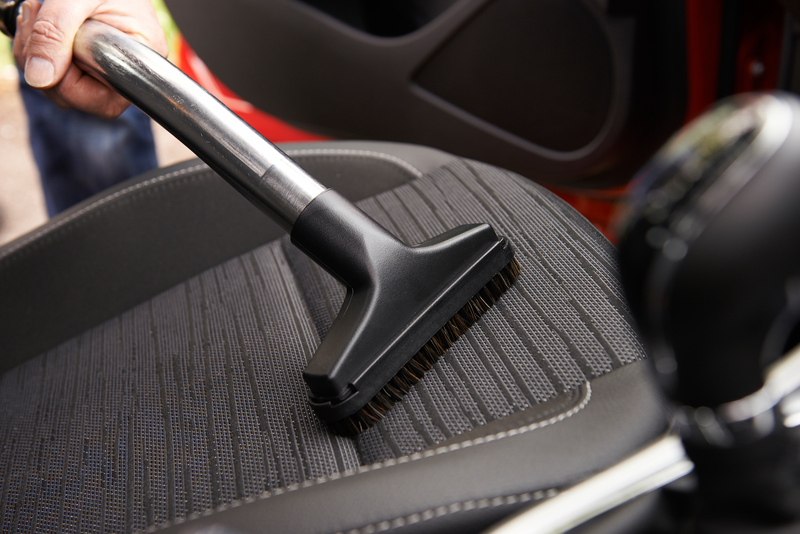Achieve a Sparkling Stovetop with These Burnt-residue Cleaning Hacks
Posted on 18/05/2025
Achieve a Sparkling Stovetop with These Burnt-residue Cleaning Hacks
A pristine stovetop not only uplifts the appearance of your kitchen but also ensures safe and efficient cooking. Over time, however, even the most diligent cooks may encounter the stubborn challenge of burnt-on residue. Whether it's a splatter from last night's sauce or a boil-over from your morning coffee, residues can become unsightly and tough to remove. With the right techniques and cleaning hacks, you can effectively clean your stovetop and regain that brilliant shine. In this comprehensive guide, we'll explore burnt residue cleaning hacks tailored for a variety of stovetop types--gas, electric, and glass--helping you achieve a sparkling, fresh look every time.
Why Does Burnt-On Residue Occur?
Cooking inevitably leads to spills and splatters, and if not cleaned promptly, these can burn onto the stovetop surface. Burnt-on residue is the result of intense heat cooking food particles and liquids into the surface, often forming a crusty or sticky layer that's challenging to remove. Factors that can contribute include:
- Forgetting to wipe spills immediately
- Accidental boil-overs
- Cooking with high heat
- Oil splatters
The Importance of a Clean Stovetop
A sparkling stove is more than just aesthetically pleasing. Regularly cleaning your stovetop prevents:
- Bacteria and mold growth from food residue
- Unpleasant odors
- Reduced efficiency or performance issues in burners
- Permanent staining or damage to the stovetop surface
Maintaining a clean stovetop means fewer headaches over time and a more hygienic cooking environment.

How to Clean Burnt Residue from Your Stovetop: The Complete Guide
Depending on your stovetop type and the severity of the residue, you may need different methods. The following hacks cover everything from daily cleaning routines to tackling the toughest, caked-on messes.
General Supplies You'll Need
- Baking soda
- White vinegar
- Lemon juice
- Non-abrasive sponges or microfiber cloths
- Plastic scraper or old credit card
- Dish soap
- Spray bottle
- Paper towels or soft rags
- Gloves (optional for sensitive skin)
Hacks to Remove Burnt Residue from Gas Stovetops
1. Soak and Scrub the Grates and Burner Caps
- Remove the grates and burner caps from the stovetop and place them in your sink. Fill with warm, soapy water and allow them to soak for at least 30 minutes.
- If residue remains after soaking, create a strong cleaning paste by mixing equal parts baking soda and water. Apply this paste to grates and caps, let sit for 15 minutes, and scrub with a non-abrasive pad.
- For particularly tough stains, use a little white vinegar--it cuts through grease powerfully when combined with baking soda.
2. Clean the Gas Stovetop Surface
- Using a microfiber cloth, wipe away any loose debris from the stovetop.
- Sprinkle baking soda liberally over burnt spots.
- Spray with white vinegar and let the mixture fizz for 5-10 minutes. This reaction helps loosen even the most stubborn grime.
- Gently scrub with a damp non-abrasive sponge, focusing on areas with heavy build-up.
- Wipe clean with a dry towel for a dazzling finish.
Pro Tip:
If burnt-on gunk persists, use a plastic scraper or an old credit card to gently lift residue without scratching the surface. Never use steel wool, as it can damage the stovetop.
Removing Burnt Residue from Electric Coil Stovetops
1. Deep Clean the Coils
- Unplug the appliance or turn off power at the breaker for safety.
- Lift and remove the coils carefully. Never immerse electrical parts in water! Instead, use a damp cloth with a tiny bit of dish soap to clean them.
- For burnt residue, make a paste of baking soda and water. Apply to the residue, let it sit for 20 minutes, then wipe off gently.
2. Clean the Drip Pans
- Remove the drip pans and soak them in hot, soapy water.
- Scrub away residue with a non-abrasive sponge. For persistent marks, try a mixture of vinegar and baking soda, then rinse thoroughly.
3. Clean the Surface Beneath the Coils
- Wipe the exposed stovetop beneath the coils with a mixture of warm water and vinegar.
- Finish by drying thoroughly before reassembling your stovetop.
How to Remove Burnt-On Mess from Glass or Ceramic Stovetops
1. Use a Razor Blade for Stubborn Spots
- After ensuring the stovetop is cool, gently scrape at burnt areas using a razor blade held at a shallow angle. Do not apply too much pressure to avoid scratches.
- Always use a purpose-made stovetop scraper for best results.
2. Harness the Power of Baking Soda & Vinegar
- Sprinkle baking soda directly on burnt spots.
- Soak a towel with hot water and white vinegar, wring out, and lay over the area for 15 minutes.
- Wipe away residue with a microfiber cloth in circular motions.
3. Commercial Ceramic Stovetop Cleaners
- If natural products aren't enough, consider a ceramic stovetop cleaner formulated for tough, burnt-on messes.
- Always follow manufacturer's instructions and rinse thoroughly to avoid streaks.
Warning:
Never use abrasive scrubbers or harsh chemicals on glass or ceramic stovetops--they can permanently scratch or damage the surface.
Unique Burnt Residue Cleaning Hacks You Haven't Tried
Lemon Juice Magic
- The acid in lemon juice naturally breaks down burnt food. Squeeze fresh lemon juice over the stained area, let it sit for 10 minutes, then scrub gently with a soft cloth.
- The fresh scent is an added bonus!
Steam Cleaning Hack
- Place a hot, damp towel over stubborn residue and leave for 10-15 minutes. The heat and steam help loosen stuck food, making it easier to wipe clean.
Dishwasher Tablet Trick
- Lightly dampen the burnt area, then gently rub with a dishwasher tablet. The cleaning agents in the tablet are powerful against burnt-on debris. Rinse well and wipe dry.
Prevention: Stop Burnt Residue Before It Starts
Prevention is the best cleaning hack! To minimize burnt-on residue on your stovetop:
- Wipe your stovetop with soapy water after every use.
- Use splatter guards for oil-heavy frying.
- Watch pots and pans to prevent boil-overs.
- Clean up spills immediately--fresh spills are much easier to remove than burnt ones.
Incorporating these habits into your routine saves time and keeps your kitchen in tip-top shape.

Frequently Asked Questions About Stovetop Cleaning
How often should I clean my stovetop?
It's ideal to clean your stovetop gently after each cooking session. Deep-cleans and tackling burnt-on residue can be done weekly or as needed depending on usage.
Can I use bleach to clean burnt residue from my stovetop?
No, bleach is not recommended. It can discolor surfaces, produce harsh fumes, and damage some stove finishes. Stick to baking soda, vinegar, or specialty stovetop cleaners for the best--and safest--results.
Are commercial degreasers safe for all stovetops?
Many are safe but always check your manufacturer's guidelines. Test on a small area first, especially on glass or ceramic cooktops.
My burners look rusty after cleaning. What can I do?
Make sure burners are completely dry before reassembling. If rust forms, use a little white vinegar to remove it, then dry thoroughly.
Conclusion: Celebrate Your Sparkling Stovetop
With these burnt-residue cleaning hacks, a sparkling stovetop is within your reach. Diligent maintenance, combined with effective cleaning routines, ensures that your stovetop stays spotless and inviting for every meal. Whether you rely on eco-friendly mixtures or innovative techniques such as steam cleaning and lemon juice, consistency is key.
Remember, not only will these hacks help your kitchen look its absolute best, but they'll also prolong the life of your appliances. Share these clever stovetop cleaning tips with family or friends, and turn stove maintenance into a rewarding habit. Happy cooking--and happy cleaning!
```


